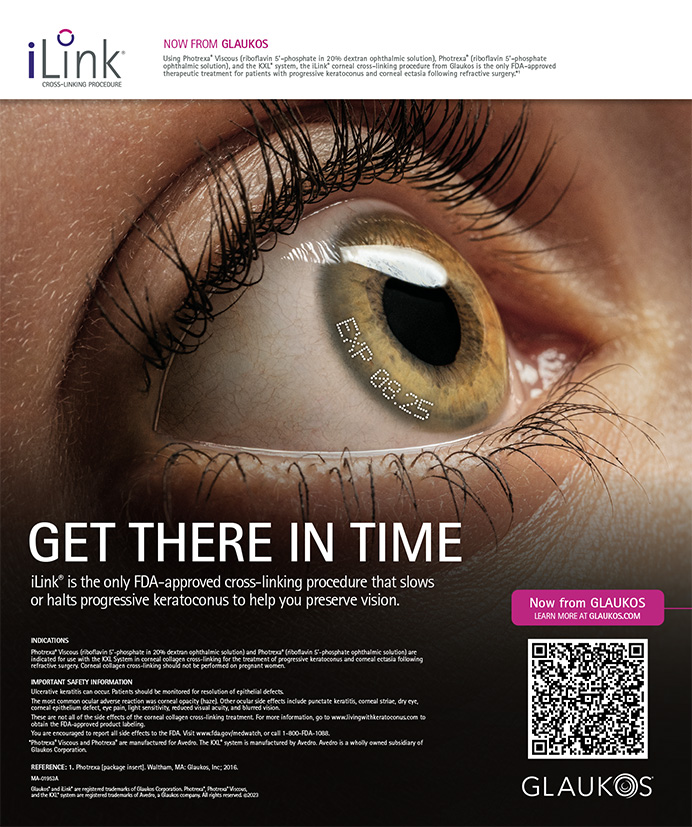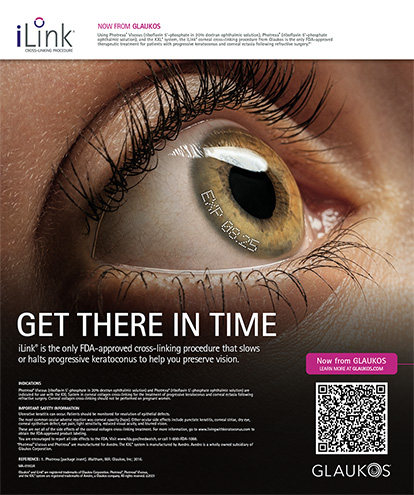One of my favorite stories about astigmatism (Should I worry that I have favorites?) was told to me by a good friend and world-class refractive cataract surgeon. After cataract extraction with multifocal IOL implantation, a patient complained of poor-quality vision. At her first two postoperative consultations, everything had looked fine. The cornea was lustrous, the capsule transparent, and the macula pristine. The technician had found no residual refractive error. The ophthalmologist had sent the patient home after explaining that, sometimes, patients need time to adjust, and he probably also mentioned neuroadaptation. The next week, one of the patient's friends visited his office for her annual examination. She told him that the patient was very unhappy and that everyone at their church was praying her vision would improve. The surgeon didn't have to be a practice management consultant to know that this case was not going to boost his procedural volume. At the patient's next appointment, she underwent topography, which revealed a small amount of residual cylinder on refraction. He performed a limbal relaxing incision, and she is now extremely happy.
A couple of years ago, we worried little about astigmatism. Today, it is a hot topic, replacing myopia and hyperopia in ophthalmic publications and meetings. During the last month, I have explained to more patients than I care to count that their eye is shaped like a football rather than a basketball. Astigmatic management, however, is all too often the missing element in refractive cataract and corneal surgery, the separation between happy and unhappy patients, the difference between postoperative glare/halos and quality vision.
This edition of Cataract & Refractive Surgery Today explores new techniques for diagnosing and treating cylinder. Cataract surgeons who may not use topography regularly will benefit from the article by William Trattler, MD. Limbal relaxing incisions may be low tech, but they are vital to fine-tuning results. Who is better at teaching the technique than Louis "Skip" Nichamin, MD; R. Bruce Wallace III, MD; and Roger Steinert, MD? Toric IOLs have made treating cylinder during cataract surgery extremely safe and effective, and they are an excellent entrée to refractive IOLs. Stephen Lane, MD, and Stephen Bylsma, MD, provide valuable advice on the use of these lenses. The excimer laser is the gold standard for accuracy, and it plays an important role in refractive cataract surgery. All surgeons should know the basics of how to incorporate laser ablation into their practices, and the articles by John Talamo, MD, and John Doane, MD, will help. One of the most novel technologies for improving astigmatic results is intraoperative aberrometry, which allows surgeons to make necessary adjustments in the OR. Kerry Assil, MD, shares his experience as one of the innovators of the ORange intraoperative wavefront aberrometer. Finally, Kevin Corcoran provides billing pearls for therapeutic and refractive astigmatic treatment.
While the evolution of cataract and refractive surgery has been extraordinary during the last several years, advances in glaucoma management have also been impressive. New treatment options such as microstents and endoscopic cyclophotocoagulation will have benefits for mainstream cataract surgeons and their patients. This edition of CRSToday also includes a series of articles by expert surgeons on what is new in glaucoma. Enjoy!


